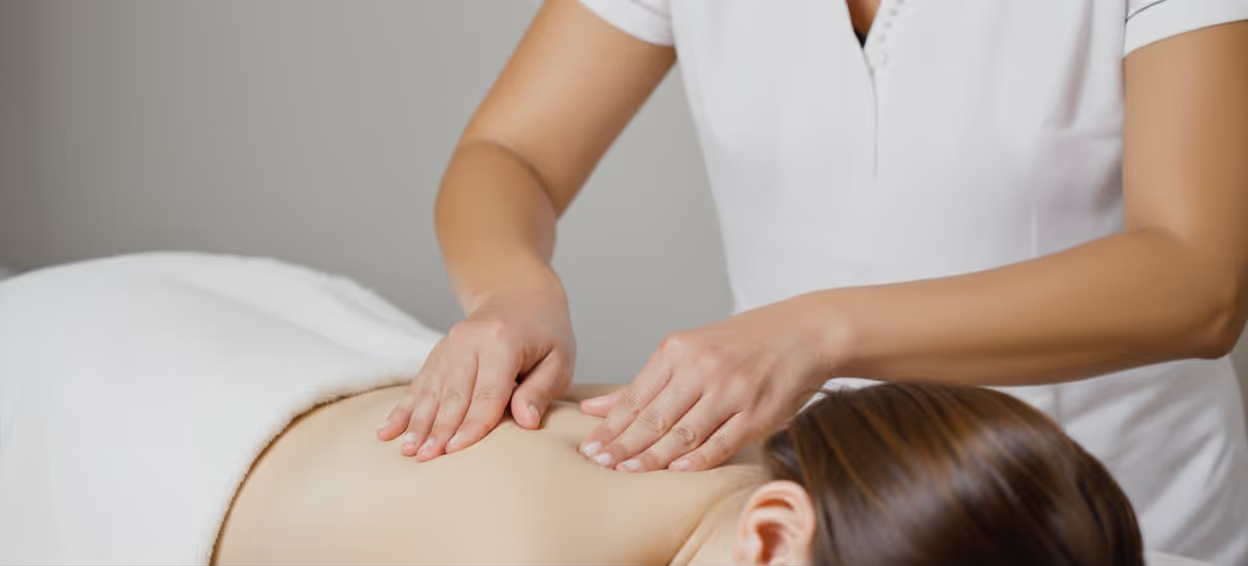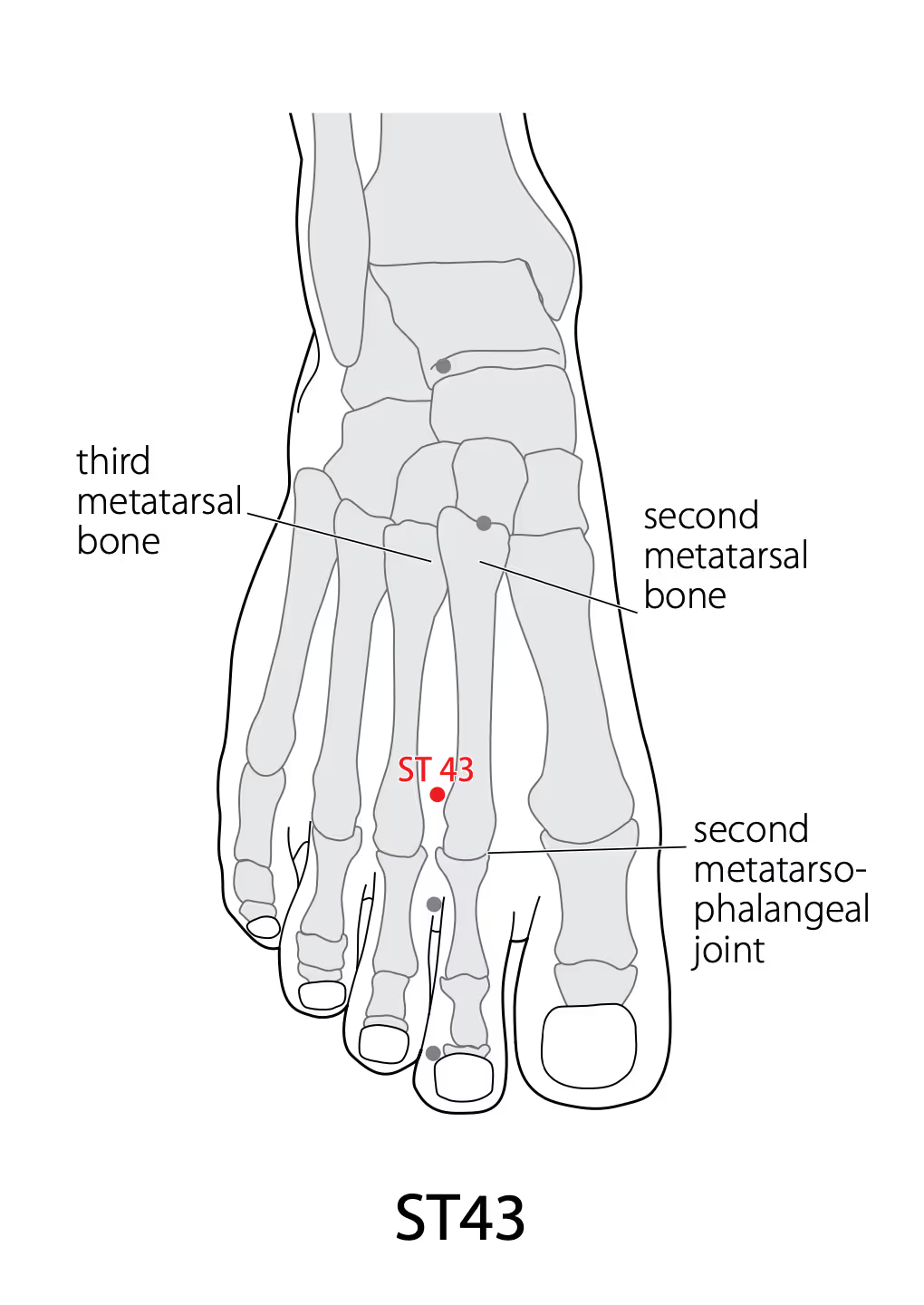Lower Back Pain
Waking up stiff, you carefully swing your legs out of bed, bracing for that familiar, deep ache in your lower back. The simple act of walking to the kitchen feels like a journey, and bending down to tie your shoes sends a sharp, unwelcome signal up your spine. Throughout the day, a persistent throb holds you back, making it hard to focus at work or enjoy time with loved ones. Sleep offers little escape, as finding a comfortable position feels impossible. The frustration and exhaustion are constant companions, shrinking your world to fit the boundaries of your pain.

Muscle Strain
Often the result of overuse, improper lifting, or poor posture, this leads to stiffness, spasms, and localized pain in the back muscles.
Herniated Disc
Sometimes called a "slipped" or "ruptured" disc, this is when the soft cushion between your spinal bones pushes out and presses on a nerve. This can cause sharp pain that radiates down into your legs, a condition often known as sciatica.
Spinal Arthritis
This involves inflammation in the small joints of your spine, leading to chronic pain, stiffness, and reduced flexibility over time.
Mapping your pain to its source
That deep, grinding ache in your joints is more than just a sign of "wear and tear." In Traditional Chinese Medicine (TCM), osteoarthritis is known as Bi Syndrome, or "Obstruction Syndrome". This means the smooth flow of your body's vital energy (Qi) and Blood through your joints has been blocked. This blockage, often caused by a combination of your body's underlying condition and environmental factors, leads to the pain, stiffness, and swelling that disrupt your life. We look beyond the joint to understand the root cause of this obstruction, offering a path toward natural, lasting relief.
Qi and Blood Stagnation
This often results from an injury or chronic strain that blocks the smooth flow of energy and blood in the lower back. The pain is typically sharp, stabbing, and fixed in one location, feeling worse with pressure and better with gentle movement.
Cold-Damp Obstruction
If your pain feels heavy, stiff, and worsens in cold, damp weather, you may have an invasion of external "cold" and "dampness." This pathogenic energy settles in the muscles and channels, constricting flow and causing a persistent, achy discomfort.
Kidney Deficiency
The lower back is energetically governed by the Kidneys. A deep, dull, and chronic ache, often accompanied by fatigue, weakness in the knees, and exhaustion that worsens with overwork, points to a deficiency in Kidney Qi. This is particularly common as we age, as our foundational energy naturally declines.

Lifestyle & Diet Tips
Warmth supports circulation and protects against external Cold–Damp invasion.
Eat Warming, Nourishing Foods
Cold foods can weaken your core energy. Favor warm, cooked meals like soups, stews, roasted vegetables, and whole grains. Spices like ginger and cinnamon are excellent for warming the channels and dispelling the "Cold" that can contribute to pain.
Incorporate Kidney-Strengthening Foods
The Kidneys are associated with the color black. Add foods like black beans, black sesame seeds, walnuts, and dark leafy greens to your diet to directly nourish your body's foundational energy and support your back.
Prioritize Restorative Sleep
Sleep is when your body repairs itself and your Kidney energy is replenished. Chronic lack of sleep will further deplete your foundational resources, making your back weaker and more prone to pain.
What you should avoid
Protect Your Qi, Guard Your Back.
Cold Foods & Icy Drinks
Icy drinks, salads, and excessive raw foods can put out your digestive fire and injure your body's warming Yang energy. This can create an internal "Cold" condition that makes you more susceptible to back pain.
Prolonged Sitting
Sitting for long periods causes the Qi and Blood in your lower body to stagnate, leading to stiffness and pain. It's like creating a dam in a river.
Cold & Damp Environments
Your lower back is vulnerable to invasion by external "Cold" and "Damp." Exposure to drafts, air conditioning, or damp weather allows these pathogens to enter the channels, where they congeal and cause a heavy, achy pain.
Know your condition to precisely relieve your pain at home.
Find out your body pattern in few minutes - which is essential for every TCM practitioner.
Your TCM advice, diagnosis and treatment plan
Take Assessment
Know your body pattern with our online assessment
Consult a TCM practitioner online
Talk to a practitioner via online consultation
Visit a TCM clinic offline
Receive full diagnosis at a local clinic
Get a personalized treatment
Get tailored treatment plan at the TCM clinic
Schedule an appointment now.
Talk to a TCM practitioner online at your convenience - no commute, no clinic wait.!
Lower Back Pain FAQs
What people like you are asking about lower back pain and its treatments
While Western medicine often focuses on structural issues like discs and vertebrae, TCM views the lower back through a broader lens. In classical Chinese medicine, the lower back is known as the "mansion of the Kidneys." This doesn't just mean the physical organs, but the entire Kidney organ system, which is considered the foundation of your body's energy and governs the health of your bones. Therefore, most chronic lower back pain is seen as a result of either a weakness in this foundational Kidney energy or a blockage in the flow of Qi (vital energy) and Blood through the area.
This is a crucial distinction. In TCM, the "Kidney" refers to a broad energy system, not just the physical organ that filters fluids. This system is like the body's root battery pack. It stores our deepest energy reserves, governs our bones and marrow, and controls the lower back. The classical texts explain that factors like aging, chronic overwork, and prolonged stress can deplete this "battery." When the Kidney system is weak, it can't properly nourish the lower back, leading to the deep, aching pain and weakness you feel.
Think of your body as having a network of energy pathways called meridians. The most important meridian for the back is the Bladder channel, which runs from your head all the way down your back and legs. Acupuncture involves placing very fine needles at specific points along this and other related channels to send signals through your body. This process helps to unblock stagnation, improve the flow of Qi and Blood to the painful area, reduce inflammation, and trigger the release of your body's own natural pain-relieving substances.
This is a classic and highly effective TCM technique. The energy meridians form a complex web. The Bladder meridian, which dominates the entire back, runs all the way down the back of the leg to the little toe. One of the most powerful and famous acupuncture points for treating back pain, Weizhong (UB40), is located right in the center of the crease behind your knee. By stimulating points far away from the site of pain, a practitioner can clear obstructions along the entire channel, often providing powerful and immediate relief to the lower back.
If acupuncture is like clearing the traffic jam, herbal medicine is like repairing the road and refueling the cars. For chronic lower back pain rooted in Kidney Deficiency, herbal formulas are essential for treating the problem from the inside out. A practitioner will create a personalized formula of several herbs that work together to nourish and strengthen the Kidney system, build back your reserves of Qi and Blood, and warm the channels to improve circulation and relieve pain.


